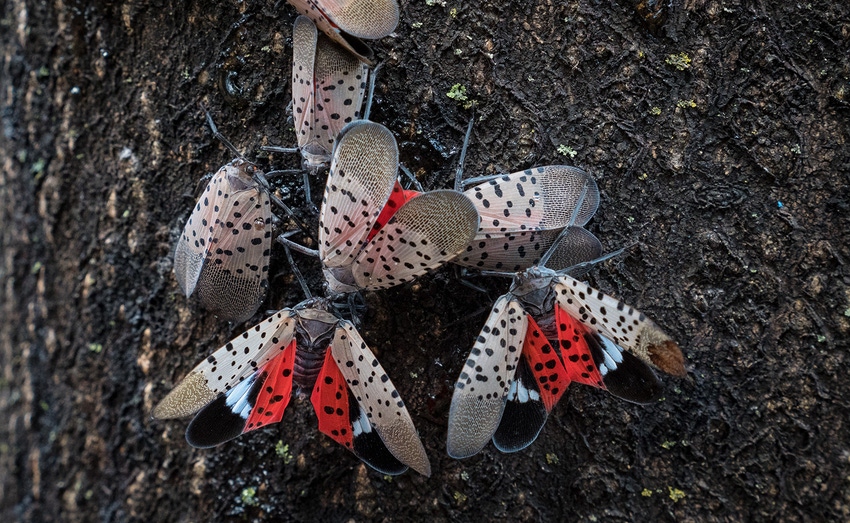
You know that feeling you get when a storm is on its way? Right now, you’re watching it wreak havoc elsewhere, but it’s headed in your direction and all you can do is brace for its impending arrival.
Mark Hoddle, Director of the University of California, Riverside Center for Invasive Species Research, believes in being proactive rather than reactive, and toward that end, he’s testing a possible method of controlling the ultimate and imminent arrival of the sap-sucking spotted lanternfly.
“Right now, its inhabiting vineyards in the Northeastern part of the U.S. with examples in Pennsylvania that have been totally wiped out because of lanternfly feeding, not just a few vines, but the entire vineyard,” he says. “They sucked the sugars out of the canes and the vines didn’t have enough antifreeze to stop them from freezing. Totally amazing and frightening and it’s headed our way.”
The New Zealander — called the Indiana Jones of the entomology world by UC Riverside magazine — believes in being prepared.
“Typically, in the past when we’ve dealt with an invasive pest, we didn’t do anything until it arrived, spread and established itself and began causing problems … a reactive approach,” he says. “When it shows up, we get to work to contain and eradicate it.
“I managed to convince the California Department of Food and Agriculture it was highly likely lanternfly would soon invade California and we should be doing something in advance of that anticipated invasion instead of waiting until after it happens and spending two or three years developing a management plan while the bug continues to spread.”
Here’s his plan, funded by a multi-year, $500,000 grant: “We’ve developed a proactive biological control program — the state’s first — to evaluate natural lanternfly enemies imported from overseas, specifically a tiny Chinese parasite wasp (Anastatus orientalis).”
A natural predator
The wasp uses a needle-like appendage to lay its own eggs inside the lanternfly’s eggs and as the baby wasp develops, the larvae eat and kill their hosts. The result is a new generation of non-harmful, pest fighting wasps, and a lot of dead lanternflies.
“The chances that the wasp would harm the wrong target is low, but we need to evaluate the parasitoid — in quarantine — to make sure it doesn’t pose a risk to non-target species,” Hoddle says.
Preparation is the key. “The idea is for us to determine effectiveness and lack of harm and stand by ready to release the fly fighter basically the day after its been spotted” and its eggs have already been intercepted inside aircraft arriving in California from the East Coast, he says.
Hoddle is advising travelers, especially those on the East Coast headed to the West Coast to check their vehicle for egg masses before they leave on their journey.
“Failure to do so could have serious consequences,” he warned.
“We want that stamped and approved permission on the shelf and immediately ready to implement — because once spotted lanternfly gets here and gets established, it can’t be eradicated.”
Hoddle likens lanternfly to other invasive pests that threaten the grape industry like the brown marmorated stink bug, now established in Washington and Oregon and encroaching the Sacramento Valley while having a population already established in the Los Angeles basin.
The biggest risk for California will be during the egg-laying season when East Coast flies indiscriminately lay eggs on the outside of things like interstate trucks, trains, packing crates, and shipping containers headed West, meaning the arrival could happen as early as the fall of this year.
“That’s potentially true, probably sooner than later,” Hoddle says, “and not only to feed on grapevines, but nut crops as well (like almonds and walnuts) where we might begin to see infestations in orchards before the end of this year.”
For more news on pests, disease management and other issues affecting vineyards, subscribe to the bi-monthly newsletter The Grape Line.
About the Author(s)
You May Also Like




